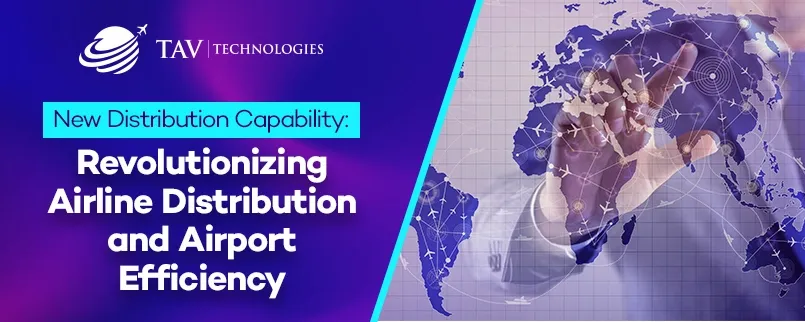
Jan 2025
In the ever-evolving aviation industry, technological advancements continuously redefine how airlines and airports operate. One such transformative innovation is the New Distribution Capability (NDC), introduced by the International Air Transport Association (IATA). Designed to modernize the way airfares and ancillary services are distributed, NDC also has implications for airports and aviation technology providers.
What is NDC?
New Distribution Capability (NDC) is a data transmission standard developed by IATA to facilitate a richer and more dynamic exchange of information between airlines and their partners. Traditionally, airlines relied on Global Distribution Systems (GDS) to share ticketing information, often limiting the flexibility and scope of their offerings. NDC uses XML-based messaging to enable direct communication between airlines, airports, and distribution platforms, creating opportunities for more personalized and transparent interactions.
How Does NDC Work for Airports and Technology Providers?
NDC establishes a standardized framework for seamless data sharing. While it primarily enhances airline distribution, its integration with airport systems can unlock significant advantages. Airports can leverage NDC data to optimize passenger flow, improve resource allocation, and enhance services such as check-in and boarding. Technology providers can integrate NDC into Airport Operational Control Centers (AOCC) and Passenger Processing Systems (PPS) to deliver real-time updates and better coordination between airlines and ground operations. These integrations ensure smoother operations, reduced delays, and an improved passenger experience.
Advantages of NDC for Airports
For airports, adopting NDC-enabled solutions means gaining access to richer data streams, which can improve operational efficiency. With real-time information about passenger preferences and flight changes, airports can allocate resources more effectively and anticipate passenger needs. This level of customization allows airports to provide a seamless travel experience while also optimizing their internal workflows. Furthermore, collaboration with technology providers who specialize in integrating NDC data into airport systems can drive innovation, such as automated baggage handling and dynamic gate management.
Challenges of NDC Implementation
While the benefits of NDC are clear, its adoption poses challenges, particularly for airports and technology providers. Transitioning from legacy systems requires significant investment in infrastructure and training. Ensuring interoperability between airlines and airports is another critical factor, as inconsistencies could disrupt the flow of information. Data security and privacy concerns also need to be addressed, given the sensitive nature of passenger information. However, these challenges are not insurmountable and can be mitigated through phased implementation and robust cybersecurity measures.
NDC’s Role in Sustainability and Innovation
NDC’s ability to provide real-time data can also support sustainability efforts in aviation. Airports can use this information to optimize energy consumption, reduce waste, and lower carbon emissions. For instance, dynamic scheduling enabled by NDC can minimize idle times for aircraft, reducing fuel consumption. Additionally, airports can align with airlines to promote eco-friendly travel options and share sustainability metrics, fostering a collaborative approach to environmental responsibility.
The Future of NDC in Airport Operations
As the aviation industry continues its digital transformation, the integration of NDC into airport systems will become increasingly important. By bridging the gap between airlines and airports, NDC can create a unified ecosystem that prioritizes efficiency and passenger satisfaction. The potential for innovation is vast, ranging from AI-driven passenger analytics to automated operational workflows. Airports that invest in NDC-compatible systems today will be better positioned to meet the demands of tomorrow’s travelers.
In conclusion, NDC is not just a tool for airlines but a transformative standard that can redefine airport operations and passenger experiences. By embracing this technology, airports and technology providers can collaborate to create a more efficient, sustainable, and passenger-centric aviation ecosystem. Let’s embrace the opportunities NDC brings and work together toward a more connected future!
